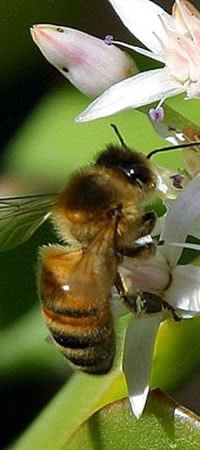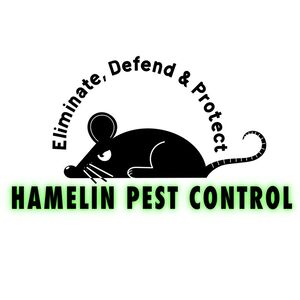
Bees: Similar in size to wasps there are several different species of bee that the public may come into contact with during the spring and summer months. The most common are listed below.
In brief all bees with the exception of Mason/Mining Bees will survive around a queen which will maintain the species by laying eggs with worker bees nurturing them to adulthood. A similar life cycle to wasps the mated queen after surviving the winter will emerge in April/May time and swarm if they have no permanent nest site.
Control:
Bees can be very aggressive when the colony is threatened, therefore it is not advisable to attempt to eradicate a bee swarm or nest unless you are professionally trained and have the appropriate protective clothing and chemicals. Even then it is a hazardous task and best left to a beekeeper or pest control officer.
Bee are however beneficial insects and nests should not be destroyed unnecessarily. Bumble Bees in particular are unlikely to sting. If possible, they should be left or relocated by a pest control officer.
- Honey Bee. Similar in size to wasps but brown all over.
- Bumble Bee. Larger than Honey Bees, black and yellow or black and orange stripes.
- Mason/Mining Bee. Almost identical to Honey Bees but solitary and do not swarm.
In brief all bees with the exception of Mason/Mining Bees will survive around a queen which will maintain the species by laying eggs with worker bees nurturing them to adulthood. A similar life cycle to wasps the mated queen after surviving the winter will emerge in April/May time and swarm if they have no permanent nest site.
Control:
Bees can be very aggressive when the colony is threatened, therefore it is not advisable to attempt to eradicate a bee swarm or nest unless you are professionally trained and have the appropriate protective clothing and chemicals. Even then it is a hazardous task and best left to a beekeeper or pest control officer.
Bee are however beneficial insects and nests should not be destroyed unnecessarily. Bumble Bees in particular are unlikely to sting. If possible, they should be left or relocated by a pest control officer.

Wasps: There are several varieties of wasp to be found in the UK the most common being the yellow and black ringed Common Wasp (Vespa Vulgaris). Adult workers measure 10–20 mm and the queen up to 20mm. These winged insects can sting several times and will attack in large numbers should their nest be disturbed. Nests can contain up to 10,000 wasps and so extreme caution is needed in eradication.
Lifecycle:
Solitary female queens awake from hibernation and begin nest building in spring fashioning hexagonal cells from chewed wood fibres and saliva. An undisturbed nest can reach 3-4ft in diameter and they are typically found in roof spaces, air-bricks, cavity walls, garden sheds, trees and even rockeries and flower beds. An egg is laid in each cell and the queen tends the larvae until they pupate and hatch as adult workers. The queen is then able to continue laying eggs while the workers tend to the needs of the growing colony. A stream of wasps flying into and from a roof space, air bricks or out-buildings is an indication there may be a nest.
Control:
Eradicating wasp’s nests is best done in the spring when the nest is small. However, it is commonly not found until the nest is a substantial size by which time there are large numbers of wasps. Removal of the nest is best undertaken by an experienced pest control professional.
Lifecycle:
Solitary female queens awake from hibernation and begin nest building in spring fashioning hexagonal cells from chewed wood fibres and saliva. An undisturbed nest can reach 3-4ft in diameter and they are typically found in roof spaces, air-bricks, cavity walls, garden sheds, trees and even rockeries and flower beds. An egg is laid in each cell and the queen tends the larvae until they pupate and hatch as adult workers. The queen is then able to continue laying eggs while the workers tend to the needs of the growing colony. A stream of wasps flying into and from a roof space, air bricks or out-buildings is an indication there may be a nest.
Control:
Eradicating wasp’s nests is best done in the spring when the nest is small. However, it is commonly not found until the nest is a substantial size by which time there are large numbers of wasps. Removal of the nest is best undertaken by an experienced pest control professional.
